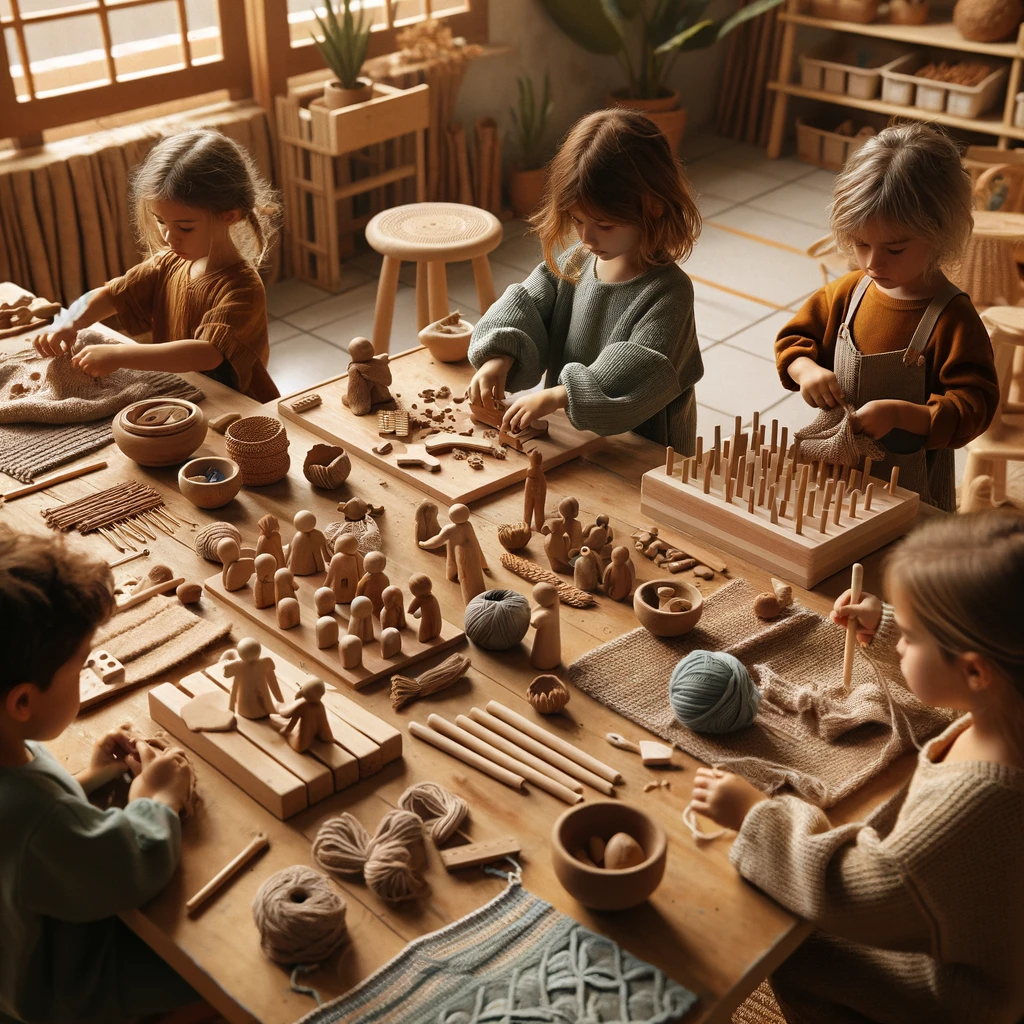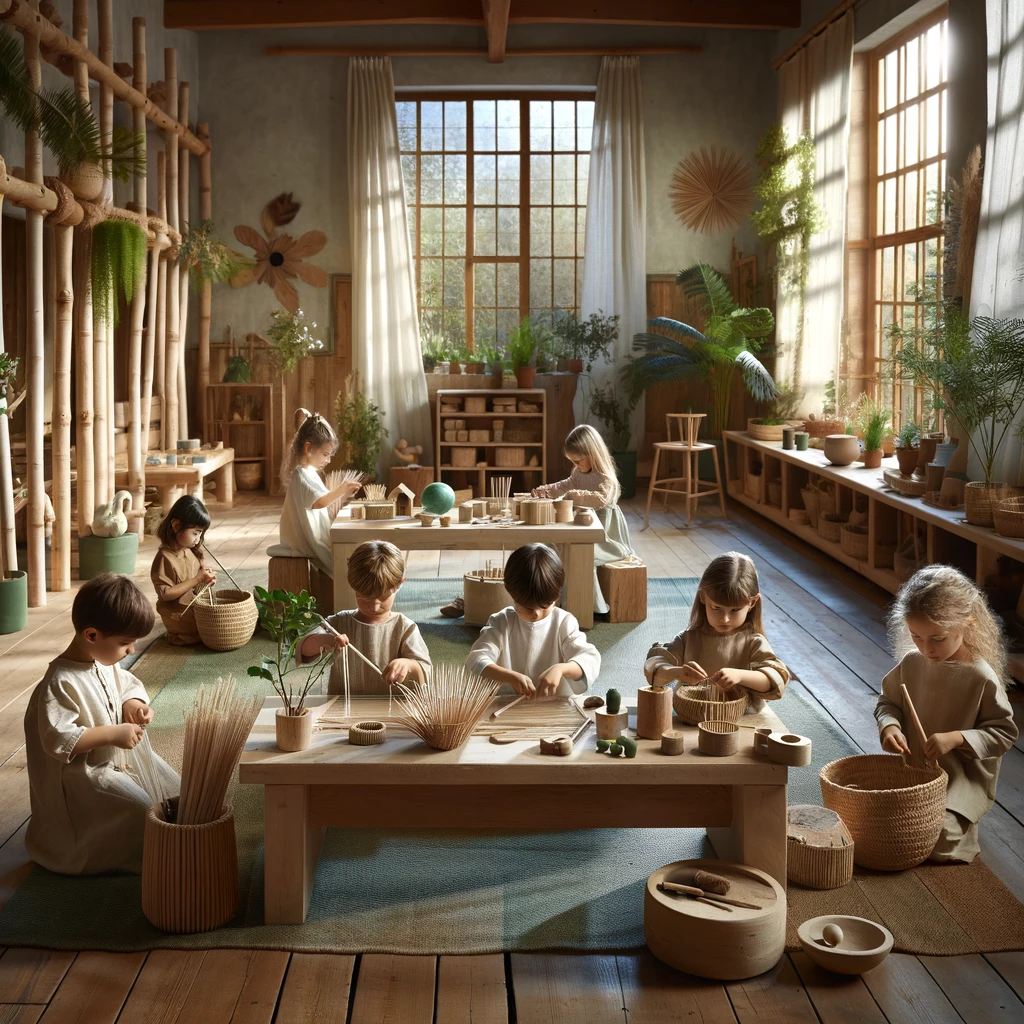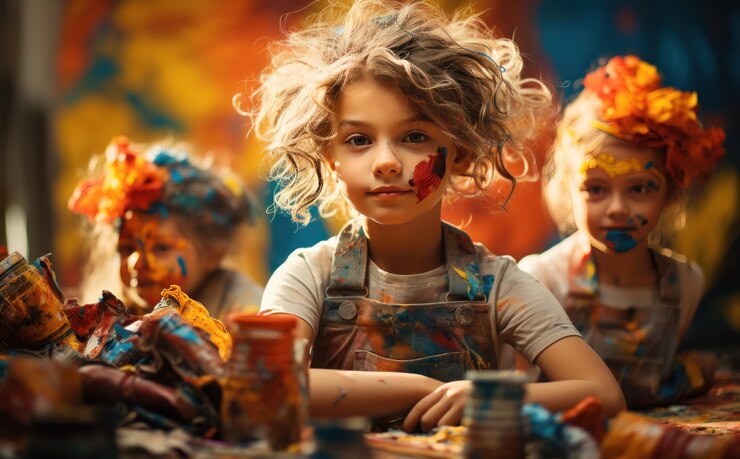Introduction of The Value of Art and Craft in Preschool Education
The skill of man is bound up with the development of his mind Value of Art and Craft in Preschool Education, and in the light of history we see it connected with the development of civilization (Dr. Maria Montessori)
A free spirit exists in every human being which seeks to materialize itself in some form of work, and the hand is the tool to achieve this task . We find samples of man’s hand work everywhere, and they provide a peek into his spirit, values and the thoughts of his time.
“Handwork in Montessori Education: Cultivating Creativity and Practical Skills in Young Children”
Value of Art and Craft in Preschool Education The Montessori curriculum aims to provide an all rounded and complete educational experience to the child . Therefore, the prepared environment also caters to the child’s growing needs and interests in his culture including arts, craft and handwork. The introduction to this subject area enables the child to discover that hands can be the medium of expression and creativity like sounds (language) and body movement ( dancing). The sim is to encourage the child to use hands to create aesthetically pleasant objects which develop his creativity and satisfy his inner needs of expression. Handwork helps the child to become a contributing member of his community as a useful citizen of the world.
children , aged 3 to 6 , need an extensive ‘sensorial’ experience of these things in order to learn about their environment and accordingly adapt and survive in it. According to Dr. Maria Montessori, during 3 to6 years of age the child’s hand is the instrument of the mind. Therefore, handwork provides an excellent means to help children develop useful skills while using their hands to manipulate different kinds of materials.
Value of Art and Craft in Preschool Education It does not just satisfy their need to use their hands but also enables them to acquire productive skills. Handwork helps children develop better eye-hand coordination. Moreover, the child gains more control over his movements and instruments of his motion become more obedient to his will. Since the children are carrying out purposeful activities and making useful crafts, their confidence and self-esteem improves along with enjoying a great sense of achievement.
Value of Art and Craft in Preschool Education not only help children to recognize and appreciate art, beauty and develop an aesthetic sense but interestingly it also helps them improve their mathematical knowledge . Several handwork activities involve concepts like symmetry, asymmetry and accurate measurements for producing a successful end product. Concepts of geometry and arithmetic are reinforced in various handwork projects.
It is highly essential to encourage children to be creative, however, leaving them alone to experiment with different media without proper directions and guidance will not lead to the best results. Thus, the best way to motivate children to create something truly productive is to show them how to utilize the proper tools and the best technique to use these tools in order to produce a specific piece of artwork.
“Unlocking Potential: The Critical Role of Handwork in Child Development and Montessori Education”
Value of Art and Craft in Preschool Education Young children are not just enthusiastic, but are actually absorbing information and knowledge from their environment at a great pace. Their intelligence and ability to grasp the proper techniques in order to carry out specific activities should certainly not be underestimated. Therefore , we should not hesitate to introduce the child to the great wealth of possibilities of what hands can create with simple materials. If provided the right conditions and sound directions any child can learn how to use the equipment and available materials properly to create beautiful pieces of art and handwork in a short span of time.
Value of Art and Craft in Preschool Education Unfortunately, in many conventional schools the significance of handwork has been underrated and ignored. The ability to read and write is given preference to such an extent that other fields of learning get ignored or neglected. Intelligence is being considered to be synonymous with the ability to read and write, while other abilities and skills are overlooked as being secondary and of little or no value.
Value of Art and Craft in Preschool Education This is an absolutely sorry state of affairs and an extremely disappointing attitude which limits the child’s true potential and restricts wholesome development. The Montessori method stresses the use of education as an aid to life. Memorizing facts and learning to read and write are important but do not completely prepare children for life. Living a good life depends upon so many other skills of the mind and the body. Therefore, necessary provisions are made available in all Montessori houses where children are not just encouraged to use the materials but also given appropriate instruction and freedom to develop life skills.
The following paragraphs discuss the important things which must be kept in mind before introducing handwork.
Timing
The best time to introduce handwork and culture is during early childhood i.e. 3 to 6 years of age. Children during this age have a natural inclination towards culture and use of hands along with the ability to concentrate on ‘work’ of their choice. They have the natural tendency to spend hours at a stretch, manipulating and working with materials which interests them.
Tools
In order to introduce children to a specific type of craft it is essential to ensure that the tools provided to the children are not mere toys. Cutting tools like scissors should be appropriately sharp yet safe for use by the children. The child should be shown how to take care of the tools he uses, for example, washing paint brushes, drying and sorting them appropriately after use. Similarly while storing tools like needles, hammers, nails, etc. it should be ensured that the material may not cause harm to anyone. A variety of coloring items should be made available e.g. crayons, color pencils, dry paint, glitters, etc., and their use should be encouraged.
Techniques
There is no limit to what type of handwork may be introduced to the child. Any technique from the world’s cultural heritage may be introduced to the child starting from simpler activities and gradually moving on to more complex ones. The directress may begin with activities which are native to the child’s own culture and then produce on to activities from other cultures around the world. Activities may include, but are not limited to, weaving mosaic, painting, block printing, embroidery, origami, carpentry, paper cutting, sewing etc.
Montessori teachers seek to demonstrate activities using the best technique to achieve the task with perfection of movement. The same rule should be applied to handwork presentations. For example, while applying paints children should be shown how to use appropriate strokes instead of just letting the paint drip on the canvas. While encouraging children to stick to the right technique, the directress should ensure that she is not discouraging creativity and experimentation with different materials in any way.
Ideas for Encouraging Handwork
The director should encourage the habit of observing the world around them, learn from it and use it in their artwork. For example, spider webs can be very inspiring pieces for weaving activities, natural science beauty can inspire children to come up with some very commendable mosaics. The children should develop the idea that nature can inspire art; plants, flowers, animals and fish everything can actually serve as an inspiration. Similarly, the color combinations in nature inspire children to make sensible color choices when working on their piece of handwork.
Value of Art and Craft in Preschool Education The works of artists from all over the world can also be shown to the children for inspiration. The director should talk to the children about the works of these artists and show them how to apply the artists’ techniques in their own work. The history and origin of different art forms like mask making, origami. European paper folding and weaving, e t c , may be discussed with the children. The children are fascinated to learn new things about their own culture as well different cultures around the world.
Value of Art and Craft in Preschool Education Books in the topic of art should also be included in the classroom book corner/library. Trips to museums and art galleries should also be arranged for the children to see real objects of arts from different cultures, and how these pieces of art can be displayed.
Modern technology Value of Art and Craft in Preschool Education like the use of cameras, computer software and other such media may also be introduced once the children start showing interest in them but the director should always keep in mind that nothing can replace the importance of a concrete experience. Children should always be allowed to have a concrete experience before moving on to Value of Art and Craft in Preschool Education abstract concepts.
